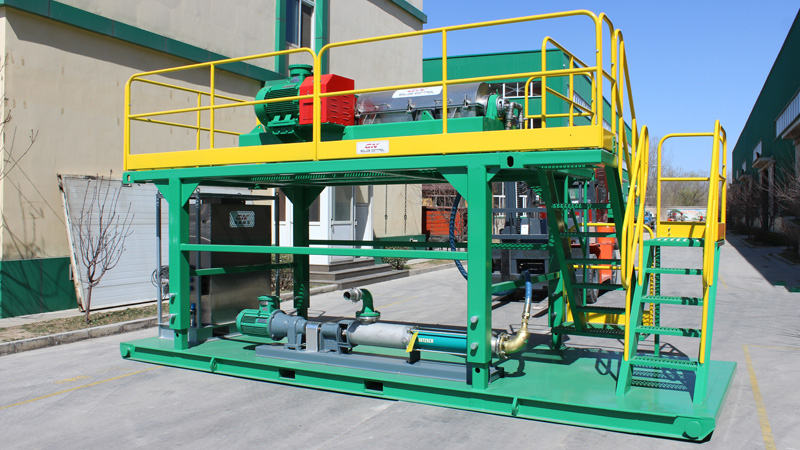The test data collected by the barite recovery system produced by our company shows that:
- Barite recycling centrifuge: The rotation speed is about 1800RPM, the “G” value is about 700, the low density separation point: 6 ~ 10μm, and the high density separation point: 4 ~ 10μm.
- Large-capacity centrifuge: The rotation speed is about 1900-2200 RPM, the “G” value is about 800, and the low-density separation point is 5-7 μm (not in the drilling fluid), which is used to exclude the low-density solid phase;
- High-speed centrifuge: The rotation speed is about 2500~3300 RPM, and the “G” value is about 1200~2100. The low-density separation point: 2~5μm is mainly used to remove the low-density content in the un-weighted drilling fluid.

The influence of various parameters of the centrifuge on the operation of the barite recovery system:
- Main engine rotation speed V: It is mainly used to control the size of the particle size of the separated particles. The higher the rotation speed, the smaller the particle size can be separated.
- Auxiliary machine (drum) speed V2: mainly used to control the pushing speed, the higher the speed, when the host speed is constant, due to the difference in speed [X = (V1-V2) / differential speed ratio] reduced ( V1: differential shaft input shaft speed), pushing material speed is reduced, at the same time, due to the reduction of pushing material speed, small particle size particles have settling time, which makes the proportion of small-size particles discharged out of the solid phase increase;
- Liquid supply volume: The amount of liquid supplied by the system determines the speed of the mud cleaning system to treat the drilling fluid, and it also affects the effect of barite recovery: the greater the amount of liquid supplied, the greater the amount of drilling fluid to be treated. The amount of barite that needs to settle during the time increases. When the sedimentation amount exceeds the system discharge amount, a part of the barite does not have enough time to settle, and the liquid phase separated by the centrifuge carries out the centrifuge system, thereby reducing the barite recovery rate. At the same time, as the amount of liquid supplied is increased, more barite is recovered, which may cause system operation failures, in particular, the increase of solid adherence on the screw feeder of the centrifuge, resulting in the balance of the centrifuge drum. Not enough but strong vibration and stuck.
- Meniscus: mainly controls the sediment thickness (liquid pool depth) in the drum of the mud centrifuge and the water content of the solids discharged, and affects the particle size: when the meniscus is completely removed (the height is lowest) The grit thickness (liquid pool depth) is the shallowest, the water content of the solids discharged is the lowest, and the content of small-size particles is the least, but at the same time the pushing load is increased. When the height of the meniscus is the highest, the thickness of the grit sand (the depth of the liquid pool) is the deepest, the water content of the solids discharged is the largest, the content of the small-size particles is the highest, and the pushing load is reduced. Therefore, the depth of the liquid pool must be properly adjusted when the treated drilling fluid contains a large amount of liquid and has a high viscosity.
More question,please contact GN solids control